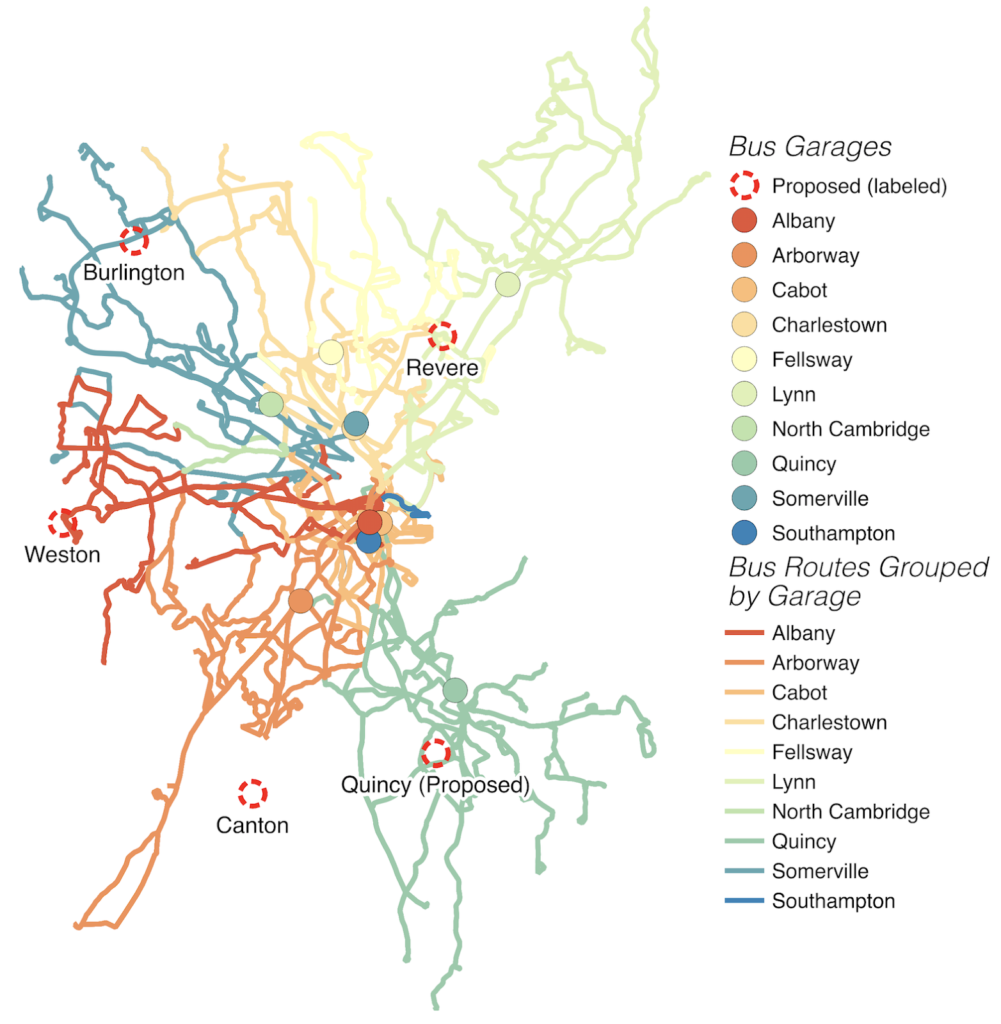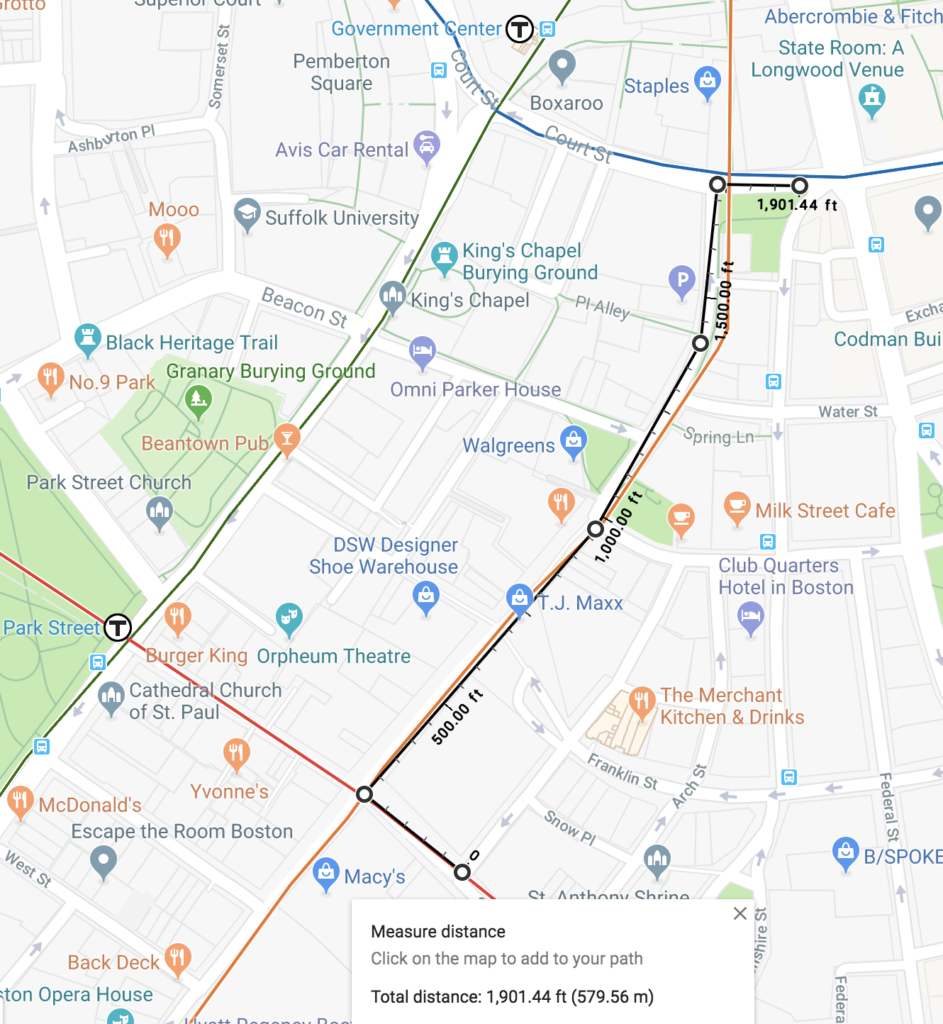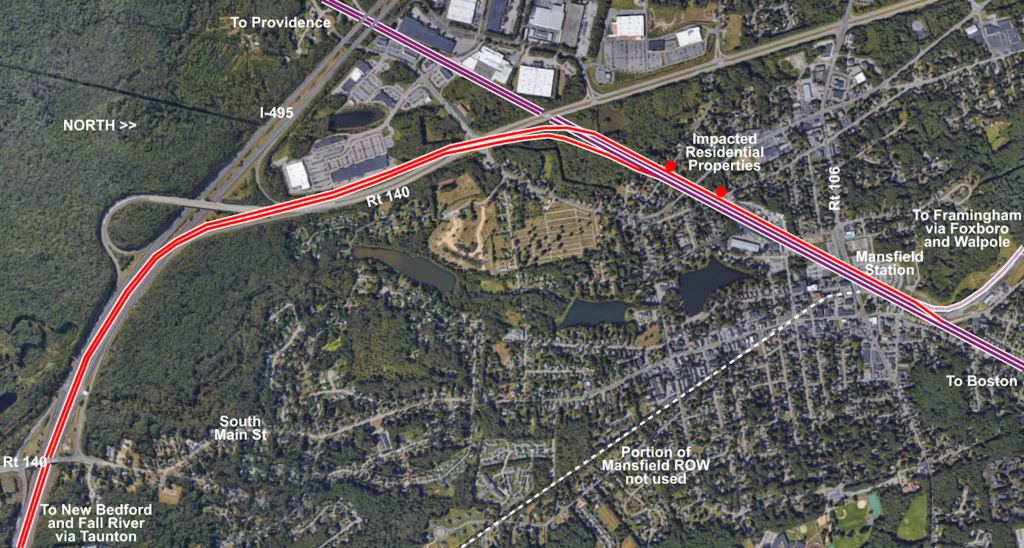Boston has a bus problem. Beyond narrow, congested roads and
routes which traverse several jurisdictions—in some cases half a dozen in the
span of a single mile—there are simply not
enough buses to go around. At rush hour, some MBTA bus routes only have
service every 20 to 30 minutes, despite crush-capacity loads on the vehicles
serving them. To add significantly more service would require the MBTA to add
additional buses to the fleet, but procurement of new vehicles is not the rate-limiting
factor. The larger issue is that the MBTA’s bus storage facilities are
undersized and oversubscribed, so adding new buses would require adding
additional storage capacity to the system, a high marginal capital cost for any
increase in service.
Before doing this, the MBTA may be able to squeeze some
marginal efficiency from the system. All-door boarding would reduce dwell
times, speeding buses along the routes. Cities and towns are working with the agency to
add queue jumps, bus lanes and signal priority, steps which will allow the
current fleet to make more trips over the course of the day. Running more
overnight service would mean that some number of buses would be on the road at
all times of the day and night, reducing the need to store those buses during
those times (although they might need to be serviced during peak hours, and may
not be available for peak service). Still, all of this amounts to nibbling
around the edges. Improving bus service may result in increased patronage, and
any additional capacity wrung out of the system could easily be overrun by new
passengers. The MBTA’s bus system is, in essence, a zero-sum game: to add any
significant capacity, the system has to move resources from one route to
another: to rob Peter to pay Paul.
Furthermore, Boston’s bus garages are
antiquated. In the Twin Cities—a cold-weather city where a similarly-sized bus
fleet provides half as many trips as Boston (although about the same number of
passenger miles)—nearly every bus garage is fully-enclosed, so buses don’t sit
outside during cold snaps and blizzards as they do in Boston. Every facility
there has been built since 1980, while several of the MBTA’s bus yards date to
the 1930s; some were originally built for streetcars. Boston
desperately needs expanded bus facilities, but it also needs new bus garages:
the facilities in Lynn, Fellsway and Quincy are in poor condition, and the
Arborway yard is a temporary facility with very little enclosed area.
However, what Boston’s bus yards lack in size or youth they
make up for in location. The MBTA bus system is unique in the country in that there is no bus service through downtown: nearly every trip to the city requires a transfer from a
surface line to a rapid transit line. In the past, elaborate transfer stations
were built to facilitate these transfers, with streetcar and bus ramps above
and below street level (a few vestiges of this system are still in use, most
notably the bus tunnel at Harvard), with bus routes radiating out from these
transfer stations. When the Boston Elevated Railway, the predecessor to
the MBTA, needed to build a streetcar yard, they generally built it adjacent to
a transfer station, and thus adjacent to as many bus routes as possible. Many
of these have become today’s bus yards, and the MBTA has some of the lowest
deadhead (out of revenue service) mileage to and from the starts of its routes.
From a purely operational standpoint, this makes sense: the
buses are stored close to where they are needed. But from an economic
standpoint, it means that the T’s buses occupy prime real estate. Unlike rail
yards, which need to be located adjacent to the lines they serve, bus yards can
be located further away. While this introduces increased deadhead costs to get
the buses from the yard to the route, it frees up valuable land for different
uses. In recent decades, the T has sold off some of its bus garages, most
notably the Bartlett Yard near Dudley and the Bennett Yard near Harvard Square,
which now houses the Kennedy School. The downside is that the T currently has
no spare capacity at its current yards, and needs to rebuild or replace its
oldest facilities.
While the agency has no concrete plans, current ideas
circulate around using park-and-ride lots adjacent to rail stations for bus
storage, including at sites
adjacent to the Riverside and Wellington stations. The agency owns these
parcels, and the parking can easily be accommodated in a nearby garage. The
issue: these parcels are prime real estate for transit oriented development,
and putting bus garages next to transit stations is not the best use of the
land. Riverside
has plans in place, and Wellington’s parking lot sits across Station Landing, which has
hundreds of transit-accessible apartments.
In addition to what is, in a sense, a housing
problem for buses, the Boston area has an acute housing problem for people. The
region’s largest bus yards are adjacent to Forest Hills, Broadway and Sullivan
Square: three transit stations with easy downtown connections. These issues are
not unrelated: there are few large parcels available for housing or transit
storage (or, really, for any other use). If the region devotes land to housing,
it may not have the ability to accommodate the transit vehicles needed to serve
the housing (without devolving the region in to further gridlock). If it uses
transit-accessible land for storing buses, it gives up land which could be used
for dense, transit-accessible housing. What the transit agency needs are sites
suitable for building bus depots, on publicly-owned land, and which would not
otherwise have a high-level use for housing.
Consider a bus maintenance facility: it is really something
no one wants in their back yard. And unlike normal NIMBYism, there actually
some good reasons for this: bus yards are noisy, have light pollution, and
operate at all times of day, but are especially busy for early morning
operations. An optimal site for a bus yard would be away from residences, near
highways (so the buses can quickly get to their routes), preferably near the
outer ends of many routes, and not on land which could otherwise be used for
transit-oriented development. It would also avoid greenfield sites, and
preferably avoid sites which are very near sea level, although if necessary
buses can be stored elsewhere during predicted seawater flood events.
The MBTA is in luck. An accident of history may provide
Boston with several locations desirable for bus garages, and little else. While
most sites near highways don’t have enough space for bus yards, when the regional
highway system was canceled in the early 1970s, several interchanges had
been partially constructed, but were no longer needed. While portions of the
neighborhoods cleared for highways have been, or could be, repurposed in to
developable land, the “infields” of highway ramps is not generally ripe for
development. Yet they’re owned by the state, currently unused, convenient to highways
and unlikely to be used for any other purpose. For many bus routes, moving to
these locations would have a minimal effect on operation costs—deadhead pull-in
and pull-out time—and the land will otherwise go unused. Land near transit
stations is valuable. Land near highways is not.
Building bus yards in these locations would allow the T to
add vehicles to the fleet while potentially closing some of its oldest,
least-efficient bus yards, replacing them with modern facilities. They wouldn’t
serve all routes, since many routes would still be optimally served by
closer-in yards with shorter deadhead movements to get the buses to the start
of the route. (To take this to an extreme: it would be very cheap to build a
bus yard at, say, the former Fort Devens site, but any savings would be gobbled
up by increased overhead getting the buses 35 miles to Boston.) Highway ramps
are optimal because it allows buses to quickly access the start and end of
routes, many of which, by history and happenstance, are near the highways
anyway.
Most importantly: moving buses to these locations would enhance
opportunities for additional housing, not preclude it. Building thousands of
new housing units adjacent to transit stations pays dividends several times
over. It increases local tax revenues and also creates new, fare-paying transit
riders without the need to build any new transit infrastructure. Finally, by
allowing more people to use transit for their commutes, it reduces the growth
of congestion, allowing people driving—and people riding transit—to move more
efficiently.
Specifically, there are five highway sites in the region
which could be repurposed for bus fleet facilities:
- Quincy, in between the legs of the
Braintree Split - Canton, on the aborted ramps of
the Southwest Expressway - Weston, where the new all-electric
tolling has allowed for streamlined land use - Burlington, in the land originally
planned for the Route 3 cloverleaf - Revere, in the circle where the
Northeast Expressway was originally planned to branch off of Route 1 through
the Rumney Marshes.
In more detail, with buses counts from the MBTA’s 2014
Blue Book. These are in-service buses required, so the total number of buses
at each location, accounting for spares, would be 15 to 20 percent higher. The
system currently maintains approximately
1000 buses.
Quincy (67 buses)
All 200-series Quincy Routes
The current Quincy garage serves the
200-series routes, with a peak demand for 67 vehicles. The current garage is in
need of replacement. The current yard takes up 120,000 square feet on Hancock
Street, half a mile from Quincy Center station. This could easily be
accommodated within or adjacent to the Braintree Split, with minimal changes to
pull-out routes. Serving additional routes would be difficult, since the
nearest routes run out of Ashmont, and pull-out buses would encounter rush hour
traffic, creating a longer trip than from the current Cabot yard.
Canton (35
buses)
Routes
24, 32, 33, 34, 34E, 35, 36, 37, 40
This would be a smaller yard and would
probably only operate during weekdays with minimal heavy maintenance
facilities, but would reduce the overall number of buses requiring storage
elsewhere.
Weston (71 buses)
Routes 52, 57, 59, 60, 64, 70/70A, all
500-series express bus routes.
With the recent conversion to all-electronic
tolling on the Turnpike and different ramp layout, the land is newly-freed,
plentiful, and many buses serving this area have long pull-out routes from
Boston. The portion between the two branches of the Turnpike and east of the
128-to-Turnpike ramp is 500,000 square feet, the same size as the Arborway
Yard, and there’s additional room within the rest of the interchange. Without a
bus yard west of Boston, any route extending west or northwest would benefit
from this yard.
Burlington (50 buses)
Routes 62, 67, 76, 77, 78, 79, 134, 350, 351,
352, 354
These routes utilize serve the northwest
suburbs, but most are served by the Charleston and Bennett divisions in
Somerville. Most routes would have significantly shorter pull-outs.
Revere (157 buses)
The two oldest bus garages north of Boston are
Lynn and Fellsway, which account for a total of 125 buses and about 200,000
square feet. They are both centrally-located to the bus network, so moving
buses to the 128 corridor would result in longer pull-outs, except for a few
routes noted above. However, the circle where Route 1 turns northeast and the
Northeast Expressway was originally planned and graded towards Lynn across
Rumney Marshes has 750,000 square feet, and the extension towards the marshes
more. The fill is far enough above sea level to not worry about flooding, and
grade separation allows easy exit and entry on to Route 1. Some buses may make
sense to base at the Route 3 site, particularly the 130-series buses. In
addition to the Lynn and Fellsway buses, this site could take over for many
routes currently operating out of the Charlestown yard, freeing up capacity
there for other uses.
Other routes served by the Charlestown yards
would face somewhat longer pull-out times from Revere, but given the development
potential in Sullivan Square, the T could consider downsizing the yard facility
there and moving operations to a less valuable site. This site, at more than
one million square feet, could likely replace the Charlestown bus facility
entirely.










